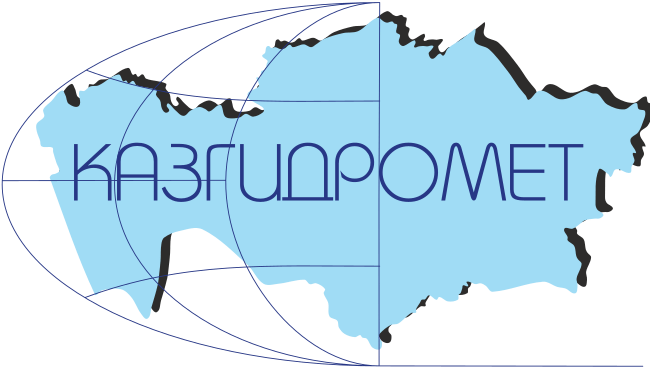ОЦЕНКА УЩЕРБА И ВОССТАНОВЛЕНИЕ ЭКОСИСТЕМЫ РЕЗЕРВАТА «СЕМЕЙ-ОРМАНЫ» ПОСЛЕ КАТАСТРОФИЧЕСКОГО ПОЖАРА 2023 ГОДА НА ОСНОВЕ ДИСТАНЦИОННОГО ЗОНДИРОВАНИЯ
DOI:
https://doi.org/10.54668/2789-6323-2025-118-3-141-151Ключевые слова:
дистанционное зондирование, лесные пожары, вегетационные индексы, восстановление экосистемыАннотация
Катастрофический природный пожар, произошедший 8 июня 2023 года в государственном лесном природном резервате «Семей-Орманы», охватил более 60 000 гектаров лесных и степных экосистем Абайской области, вызвав беспрецедентные разрушения. Целью настоящего исследования является оценка ущерба и мониторинг восстановления экосистемы в течение года после пожара с использованием данных дистанционного зондирования Landsat и расчёта вегетационных индексов NDVI, NBR, dNBR и NDMI. Анализ временного ряда спутниковых снимков за май 2023...июль 2024 гг. позволил выделить зоны горения, определить тяжесть воздействия и отследить начальные этапы регенерации. Результаты показали резкое снижение NDVI и NBR, сопровождаемое устойчиво низкими значениями NDMI, указывающими на деградацию влагонакопительных свойств экосистемы. Несмотря на частичное восстановление травяного покрова, полное возвращение к допожарному состоянию потребует десятилетий, особенно в условиях климатической аридности региона. Полученные данные подчёркивают ценность интеграции ГИС- и ДЗЗ-технологий для оценки воздействия природных возмущений и могут быть использованы в системе экологического мониторинга и управления особо охраняемыми природными территориями.
Библиографические ссылки
Liu C-L, Wang Y-R and Liu W-Y (2025) Multi-index remote sensing for post-fire damage assessment: accuracy, carbon loss, and conservation implications. Front. For. Glob. Change. 8:1577612. doi: 10.3389/ffgc.2025.1577612
Shogelova, N. ., & Sartin, S. . (2023). Earth remote sensing application for forest fire size, burn state and fire recovery. Engineering Journal of Satbayev University, 145(3), 31–39. https://doi.org/10.51301/ejsu.2023.i3.05
Santos, S. M. B. d., Bento-Gonçalves, A., Franca-Rocha, W., & Baptista, G. (2020). Assessment of Burned Forest Area Severity and Postfire Regrowth in Chapada Diamantina National Park (Bahia, Brazil) Using dNBR and RdNBR Spectral Indices. Geosciences, 10(3), 106. https://doi.org/10.3390/geosciences10030106
Zhou, G., Eisenhauer, N., Du, Z., Lucas‐Borja, M., Zhai, K., Berdugo, M., Duan, H., Wu, H., Liu, S., Revillini, D., Sáez-Sandino, T., Chai, H., Zhou, X., & Delgado‐Baquerizo, M. (2025). Fire-driven disruptions of global soil biochemical relationships. Nature Communications, 16. https://doi.org/10.1038/s41467-025-56598-z.
Sentinel Asia. (2023, June 8). Forest fire in Kazakhstan on 08 June, 2023. Retrieved July 9, 2025, from https://sentinel-asia.org/EO/2023/article20230608KZ.html
N.Shogelova, & S. Sartin. (2021). Remote sensing in urban forestry: recent applications and future directions on the example of world experience. Journal of Geography and Environmental Management, 63(4), 4–14. https://doi.org/10.26577/JGEM.2021.v63.i4.01
Toleubekova Zh., Shogelova N., Shults R., Tatarincev L. Organization of forest fund use: from monitoring to sustainable forest model use // Sustainable Development of Mountain Territories. – 2025. – T. 17. – № 1. – S. 266–281. DOI: 10.21177/1998-4502-2025-17-1-266-281.
Morresi, D., Vitali, A., Urbinati, C., & Garbarino, M. (2019). Forest Spectral Recovery and Regeneration Dynamics in Stand-Replacing Wildfires of Central Apennines Derived from Landsat Time Series. Remote Sensing, 11(3), 308. https://doi.org/10.3390/rs11030308
Tienaho, N., Wittke, S., Yrttimaa, T., Kivimäki, A., Puttonen, E., Saarinen, N., & Vastaranta, M. (2025). Examining low-intensity surface fires in boreal forests using sentinel-2 time series and bitemporal terrestrial laser scanning. Scandinavian Journal of Forest Research, 40, 29 - 40. https://doi.org/10.1080/02827581.2025.2457469.
Siqueira, R., Moquedace, C., Silva, L., De Oliveira, M., De Barros Cruz, G., Francelino, M., Schaefer, C., & Fernandes-Filho, E. (2025). Do finer-resolution sensors better discriminate burnt areas? A case study with MODIS, Landsat-8 and Sentinel-2 spectral indices for the Pantanal 2020 wildfire detection. International Journal of Remote Sensing, 46, 3968 - 3991. https://doi.org/10.1080/01431161.2025.2496000.
Delcourt, C., Combee, A., Izbicki, B., Mack, M., Maximov, T., Petrov, R., Rogers, B., Scholten, R., Shestakova, T., Wees, D., & Veraverbeke, S. (2021). Evaluating the Differenced Normalized Burn Ratio for Assessing Fire Severity Using Sentinel-2 Imagery in Northeast Siberian Larch Forests. Remote. Sens., 13, 2311. https://doi.org/10.5194/EGUSPHERE-EGU21-2518.
Rossetti, I., Calderisi, G., Cogoni, D., & Fenu, G. (2024). Post-Fire Vegetation (Non-)Recovery across the Edges of a Wildfire: An Unexplored Theme. Fire. https://doi.org/10.3390/fire7070250.
Alegria, C. (2022). Vegetation Monitoring and Post-Fire Recovery: A Case Study in the Centre Inland of Portu-gal. Sustainability. https://doi.org/10.3390/su141912698.
Hao, B., Xu, X., Wu, F., & Tan, L. (2022). Long-Term Effects of Fire Severity and Climatic Factors on Post-Forest-Fire Vegetation Recovery. Forests. https://doi.org/10.3390/f13060883.
Bright, B.C., Hudak, A.T., Kennedy, R.E. et al. Examining post-fire vegetation recovery with Landsat time series analysis in three western North American forest types. fire ecol 15, 8 (2019). https://doi.org/10.1186/s42408-018-0021-9
Chu, T., & Guo, X. (2014). Remote Sensing Techniques in Monitoring Post-Fire Effects and Patterns of Forest Recovery in Boreal Forest Regions: A Review. Remote Sensing, 6(1), 470-520. https://doi.org/10.3390/rs6010470
Guo, M., Li, J., Yu, F., Yin, S., Huang, S., & Wen, L. (2021). Estimation of post-fire vegetation recovery in boreal forests using solar-induced chlorophyll fluorescence (SIF) data. International Journal of Wildland Fire, 30(5), 365–377. https://doi.org/10.1071/WF20162
Shogelova N., Sartin S., & Toleubekova Zh. (2025). Analysis of vegetation data from the quarters of the "Dalneye" forestry district. Journal of Geography and Environmental Management, 77(2). https://doi.org/10.26577/JGEM20257726
Ponomarev, E., Masyagina, O., Litvintsev, K., Ponomareva, T., Shvetsov, E., & Finnikov, K. (2020). The Effect of Post-Fire Disturbances on a Seasonally Thawed Layer in the Permafrost Larch Forests of Central Siberia. Forests. https://doi.org/10.3390/f11080790.
Xu, H., Chen, H., Chen, D., Wang, Y., Yue, X., He, B., Guo, L., Yuan, W., Zhong, Z., Huang, L., Zheng, F., Li, T., & He, X. (2024). Global patterns and drivers of post-fire vegetation productivity recovery. Nature Geoscience. https://doi.org/10.1038/s41561-024-01520-3.
Mohamed, A., & Kimura, R. (2014). Applying the Moisture Availability Index (NTDI) over Vegetated Land in Central Asia: Mongolian Steppe. Journal of Water Resource and Protection, 06, 1335-1343. https://doi.org/10.4236/JWARP.2014.614123.
Liu, Y., Wu, C., Jia, R., & Huang, J. (2018). An overview of the influence of atmospheric circulation on the climate in arid and semi-arid region of Central and East Asia. Science China Earth Sciences, 61, 1183-1194. https://doi.org/10.1007/s11430-017-9202-1.
Загрузки
Опубликован
Как цитировать
Выпуск
Раздел
Лицензия
Copyright (c) 2025 Назым Шогелова, Сергей Сартин

Это произведение доступно по лицензии Creative Commons «Attribution-NonCommercial» («Атрибуция — Некоммерческое использование») 4.0 Всемирная.





